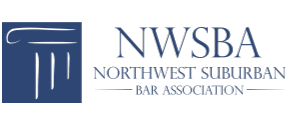
312-981-0409
33 N Dearborn St 10th Floor, Chicago, IL 60602
Serving Clients Across 7 Illinois Locations
An Overview of E. Coli And Salmonella
Food safety is a paramount concern for individuals and communities worldwide. Among the numerous microorganisms that can lead to foodborne illnesses, Escherichia coli (E. coli) and Salmonella stand out as common culprits. In this blog, we will explore the characteristics, sources, symptoms, and preventive measures associated with these two bacteria, shedding light on the importance of understanding and mitigating the risks they pose.
Escherichia Coli (E. coli)
E. coli is a diverse group of bacteria that typically reside in the intestines of humans and animals. While most strains are harmless, certain types can cause severe foodborne illnesses. One notorious strain is E. coli O157:H7, known for producing a powerful toxin that can lead to severe complications, such as kidney failure.
Sources: Contamination of food products with E. coli often occurs through contact with contaminated water, raw or undercooked meat (especially ground beef), unpasteurized milk, and raw vegetables. Cross-contamination during food handling and inadequate hygiene practices can also contribute to the spread of E. coli.
Symptoms: Infections with E. coli can lead to symptoms such as diarrhea, abdominal cramps, nausea, and vomiting. In severe cases, it can progress to hemolytic uremic syndrome (HUS), a condition characterized by kidney failure.
Preventive Measures: Proper cooking and handling of food, especially meat products, along with thorough handwashing, are crucial in preventing E. coli infections. Avoiding consumption of raw or undercooked foods, practicing good hygiene in the kitchen, and ensuring the cleanliness of water sources contribute to minimizing the risk of contamination.
Salmonella
Salmonella is a group of bacteria that can cause a range of illnesses, collectively referred to as salmonellosis. There are various types of Salmonella, with Salmonella enterica being one of the most common culprits of foodborne infections.
Sources: Salmonella is commonly associated with raw or undercooked eggs, poultry, meat, and unpasteurized dairy products. Contamination can also occur through contact with reptiles, pets, and their environments.
Symptoms: The symptoms of a Salmonella infection include diarrhea, fever, abdominal cramps, and vomiting. While most people recover without treatment, severe cases may require medical attention.
Preventive Measures: Proper food handling and cooking, especially when it comes to eggs and poultry, are essential in preventing Salmonella infections. Avoiding the consumption of raw eggs and unpasteurized dairy products, practicing thorough hand washing, and maintaining good hygiene practices in the kitchen are crucial preventive measures.
Understanding the characteristics, sources, symptoms, and preventive measures associated with E. coli and Salmonella is vital for safeguarding public health. While the majority of infections are preventable through proper food handling and hygiene practices, instances of contamination can still occur, leading to serious health consequences.
Seeking Legal Guidance for Food Poisoning? Contact Newland & Newland, LLP Today!
If you or someone you know has suffered from a severe case of food poisoning due to E. coli or Salmonella contamination, seeking legal advice may be necessary. Newland & Newland, LLP specializes in handling cases related to foodborne illnesses, providing expert guidance and support. Contact us whether you are in Chicago, Arlington Heights, Libertyville, Itasca, Crystal Lake, or Joliet today to ensure your rights are protected and to explore the possibility of seeking compensation for your suffering.
-

Foreclosure and Bankruptcy
Visit Website -

Real Estate and Estate Planning
Visit Website -

Personal Injury
Visit Website

 Spanish
Spanish Cantonese
Cantonese















